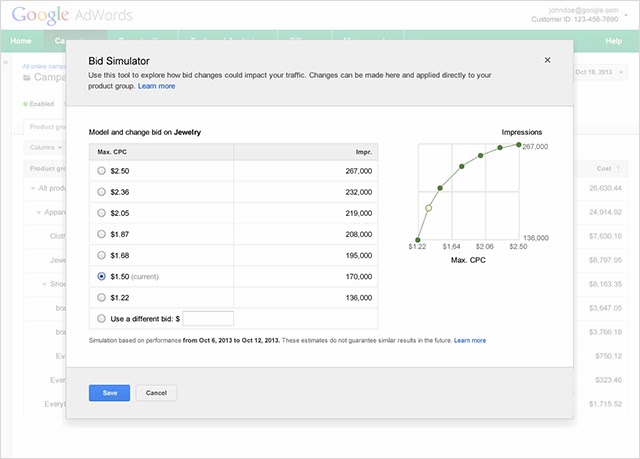Everyday, people search on Google for the best products from retailers
large and small. With Product Listing Ads (PLA) on Google Shopping,
people can browse a wide selection of products, finding high-quality
imagery and relevant product information like brand and price.
To make it easier for you to connect with these consumers and promote
your products on Google, Google introducing Shopping campaigns, a new
campaign type for PLAs. Shopping campaigns streamline how you manage and
bid on your products, report on your performance, and find
opportunities to grow your traffic from Google.
Key benefits
1. Retail-centric way to manage your products
Shopping campaigns allow you to browse your product inventory directly in AdWords and create
product groups
for the items you want to bid on. For example, if you’re a fashion
retailer, you’ll see what types of shoes are in your data feed and how
many boots you can promote. You use the product attributes derived from
your data feed such as Google product category, product type, brand,
condition, item id and
custom labels to organize your inventory
into product groups. Custom labels are a new, structured way to tag your
products in your data feed with attributes that matter to you, such as
‘margin’ to separate your high- and low-margin products. To see all the
items you can bid on, the
Products tab will show you a full list of your approved products and their product attributes.
2. Advanced reporting to measure product performance
Regardless of how you choose to structure your product groups, Shopping
campaigns offer the unprecedented ability to view your performance data
by product or product attribute. Since performance metrics are
associated with the item and not the product group, you can filter and
segment data by your product attributes. This includes Google product
category, product type, brand, condition, item id and custom labels. For
example, you’ll see which Apparel & Accessories categories drive
the most clicks, without having to break out your clothing category into
a separate product group.
3. Competitive data to size your opportunity
To help you optimize and scale your PLAs, Shopping campaigns provide insights into your competitive landscape. In the
Product Groups tab,
you can add benchmark columns to see the estimated average CTR and Max
CPC for other advertisers with similar products. The competitive
performance data you see is aggregated and averaged, so all performance
data is anonymous. Coming soon, you’ll have impression share columns to
help you understand the opportunity lost due to insufficient bids and
budgets, and a bid simulator will help you estimate the amount of
impressions you’ll receive as you adjust your bids.
How to get started
Shopping campaigns are currently available to a limited number of
advertisers. It will be rolling out gradually in the US, with full
global availability by early next year. API support will come in 2014 as
well.




